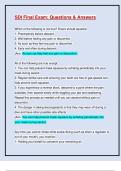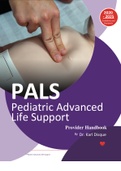Exam (elaborations)
Final Exam:SDI:SDI Final Exam 100% Verified Questions & Answers: Latest Updated A Plus Score Solution
- Course
- SDI
- Institution
- Kaplan University
Which of the following is not true? Divers should equalize: 1: Preemptively before descent. 2: Well before feeling any pain or discomfort. 3: As soon as they feel any pain or discomfort. 4: Early and often during descent. (Ans- As soon as they feel any pain or discomfort. Objects under wat...
[Show more]




